
Luann Griffin / EyeEm/EyeEm/GettyImages
Fresh sage is one of the best herbs for drying for a lot of reasons. Its leaves are big and sturdy and easy to work with, for one thing, and it keeps its flavor better than a lot of other herbs. It's also a practical tactic, whether you grow your own or just buy it for your holiday cookery. In the garden, it lasts all summer, but it's long gone by the time the holidays roll around, so you'll need to dry some for the turkey. On the other hand, if you buy it fresh for one holiday, you can dry the leftovers for the next one.
Hang 'Em High
If it's the end of the season and you're harvesting whole stems at a time, the simplest and lowest-fuss way to dry sage is just to hang it up. Gather the stems in loose bundles and tie them together at the base with a piece of kitchen twine, leaving a long "tail" on the twine so you can hang them up. You'll need to find a spot that's breezy but out of direct sun. That can be tricky, because both breeze and sun come though the same windows, but most homes have a good place or two. Leave the sage to hang for a few days to a week, checking it periodically. When the leaves are brittle and fully dried, you're done. If you find that the outsides are drying and the insides are not, you've made your bundles either too tight or too large. Untie them, take out the dry stems, and then tie the rest back up and rehang them until they're dry as well.
Use a Dehydrator
If you own a dehydrator or have the option of borrowing one, that's always a good way to dry herbs. Cut the stems into short sections and arrange them in a single layer on the trays, with the leaves close but not touching each other. You want to leave enough space between them for the air to circulate. You can also dry just the leaves, which is quicker, but if you keep them on the stem they're less likely to blow around in the dehydrator. Dry them at a low setting, usually 95 to 115 degrees Fahrenheit, depending on your dehydrator. They'll take up to four hours on the stem or less if you do individual leaves. They're done when they're dry enough to crumble in your hand.
Oven-Dry Them
Your oven works for drying herbs, though its lowest temperature is probably higher than you'd want. Set the oven as low as it can go and then heat it to that temperature. While it's heating, spread your sage leaves over a wire rack and place the rack over a baking sheet. Turn the oven off and let it cool for a few minutes with the door partly open. Then slide the sheet in when the oven's warm but not hot. Prop the door open with the handle of a wooden spoon so air can circulate. Your oven light will provide a gentle heat, so turn that on to help with the drying. Ideally you want the temperature to hover around 100 F, which means you'll probably need to turn the oven back on for a minute or so periodically to nudge the temperature back upward. The leaves should be dry in three to four hours, depending on how humid your climate is.
Microwave Them
If you have a relatively small quantity of sage leaves to dry or if you're in a hurry, you can even use your microwave to dry the herbs. Pull the leaves from the stems and spread them in a single layer, not touching, on couple of sheets of paper towel. Top with up to five more layers each of herbs and paper towel; then slide them into your microwave. Zap the leaves at full power for 30 seconds and let them rest for 30 seconds. Your microwave vents the hot air, but if you see any condensation inside, open the door during the rest breaks so any heavy moisture can evaporate. Repeat the whole process of microwaving for 30 seconds and resting for 30 seconds for up to 10 minutes, until the leaves are dry and crisp when you test them.
Store Your Sage
The drying process is done once the leaves are dehydrated enough to crumble, but your job isn't finished yet. First, if you've used any of the methods involving heat, you'll need to let the herbs cool completely to room temperature. Strip the leaves from the stems if necessary. You can either leave them whole or crumble them, depending on how you plan to use your sage or – better yet – do some of each. Pack the sage gently into zipper-seal storage bags, small airtight tins or sealer jars, or any other airtight packaging that's practical for you. If you have a vacuum food sealer, that's even better. Keep your sage in a cool, dry place out of direct sunlight and use it as needed. Dry herbs are always best when they're freshest, so try to have it all used up before the next year's fresh sage comes along.
Related Articles

How to Dry Fresh Parsley
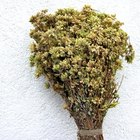
How to Dry or Freeze Oregano
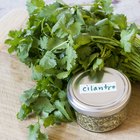
How to Dry Cilantro at Home

How To Dry Parsley in a Convection Oven
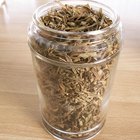
How to Dry Tarragon

How to Dry Sage Leaves Yourself

How to Freeze Thyme in a Bag
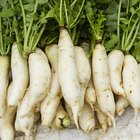
How to Dry Radishes

How to Dry Papaya Leaf for Tea

How to Dry Corn on the Cob
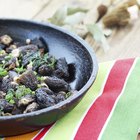
How to Dry Wild Morel Mushrooms

The Difference in Fresh or Dry Oregano
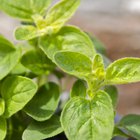
How to Eat Fresh Oregano Leaves
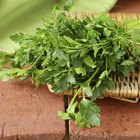
How to Freeze Fresh Parsley

How to Dry Tomatoes in the Oven

How to Preserve a Boutonniere

How to Rehydrate Dried Herbs
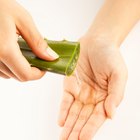
Can I Store Aloe Vera Gel From a Plant ...

How to Dehydrate Vegetable Chips

How to Dry Jalapenos
References
Writer Bio
Fred Decker is a trained chef and prolific freelance writer. In previous careers, he sold insurance and mutual funds, and was a longtime retailer. He was educated at Memorial University of Newfoundland and the Northern Alberta Institute of Technology. His articles have appeared on numerous home and garden sites including GoneOutdoors, TheNest and eHow.